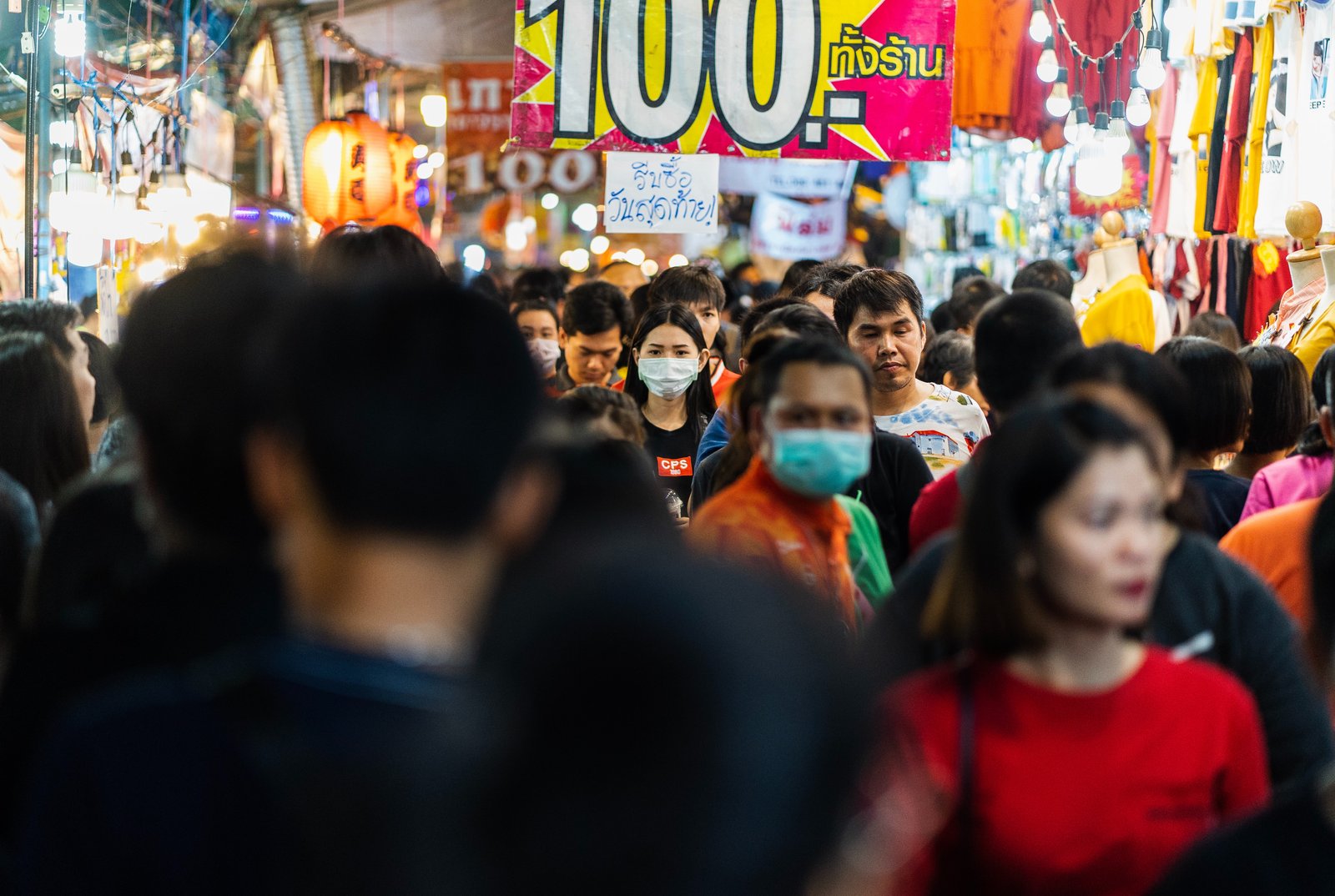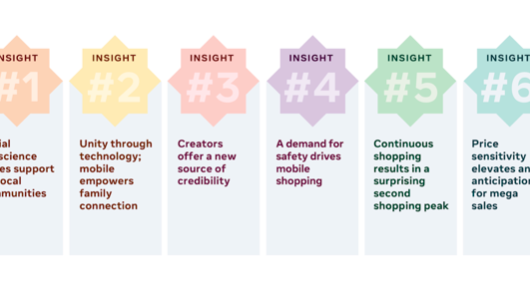Week: July 20th – 24th
by Interbrand
Several weeks ago, when the gravity of the situation became clear, Interbrand started regular reporting on how brands were dealing with the COVID-19 crisis. What’s now becoming clear is that the current climate is one of near perpetual disruption. So the brand consulting firm made the decision to keep on telling the stories of inspiring brand leadership and strategy amid the latest crises in an anxious world. Interbrand’s goal remains the same: to provide an up-to-the-minute source of information, inspiration and insight on brand moves as they happen.

Technology & Social Media
Instagram is to roll out Instagram Shop, which it initially detailed in May, in the U.S, with plans to take it global in the coming weeks. The Facebook-owned photo- and video-sharing network also revealed that U.S. users will be able to complete their transactions with Facebook Pay, also in the coming weeks.
Instagram began running a small global test of Instagram Shop earlier this month. The new destination in its Explore tab will enable users to shop from brands and creators, discover trends, see personalized recommendations and preview exclusive offerings. Instagram Shop will feature fresh collections and products from brands and creators, as well as special curations from the @shop social shopping channel, which debuted in May 2019. It will also be added to the application’s navigation bar later this year.
A new site called WindowSwap can help those without picturesque (or any) lockdown views by letting you look through other people’s windows from all over the world. WindowSwap lets you use your browser to watch a video of a window and its unique view from different locations across the globe.
There are scenes from all over: there’s a rainy street in Thailand, a small field with a gentle breeze on a sunny day in Austria, a mountain view from Switzerland, a busy street in London, a view over a boardwalk and the ocean in Japan, a cat watching birds in Qatar, a view of the city skyline in Singapore, and an almost panoramic view of the ocean from Oahu, among many others. The videos are prerecorded and submitted by users. The site asks for 10-minute HD videos of “your window and frame,” along with the creator’s name and location. “Horizontal, vertical, square, round or decorative, all kinds of windows are welcome!” the site reads.
Travel & Hospitality
IKEA has announced it will begin selling vegan meatballs in its store restaurants for the first time. The new balls are made from pea protein, oats, potatoes, onion, and apple, and yet offer “the same great taste, look, and juicy bite of the iconic original”, according to the Swedish retailer. Its regular meatballs contain a blend of beef and pork and have become a mainstay of the shopping experience across the world. Dubbed “plant balls”, IKEA said the new menu item has just four per cent of the carbon footprint of its traditional counterpart, and is a step towards the company’s ambition to become “climate positive” by 2030.
The plant-based meatballs will be available in its roughly 290 European stores starting this August, with other markets set to follow a couple of months later. IKEA said the plant balls should appeal to meat eaters, vegetarians, and those simply looking to cut down, and added that it wants to “inspire more sustainable eating and lifestyle habits”. Hege Sæbjørnsen, the sustainability manager for IKEA UK and Ireland, said: “At IKEA, we are committed to having a positive impact on people and the planet.
In order to reduce the climate footprint of the total IKEA business, including our food business, and make climate friendly, delicious food available for everyone, we are making sure meat alternatives are an easy, desirable and affordable choice. With the new plant ball we can now offer meat lovers a great tasting, more sustainable alternative – without compromising on the IKEA meatball experience that is loved by so many.”
Travel and recommendation site Tripadvisor has quietly launched what it’s calling Reco, a concierge-style platform that matches travelers who’d rather not flip through Tripadvisor’s entire portfolio of hospitality brands, restaurants and destinations with a personalized “trip designer.” For a $199 fee, travelers on Reco (which is still in beta testing mode) can search a destination, offer their budget, and list any activities and interests.
They’re then matched with a travel adviser (the platform has hired “a few hundred”) who will begin planning the trip with the traveler accordingly. “Their role is to be there for the traveler from start to finish. That’s a really important aspect for what they’ll do for the traveler when there’s so much uncertainty out in the world,” said Brad Soroca, who joined Tripadvisor this April as VP of marketing and business development, and is overseeing the Reco brand. When asked why Tripadvisor opted to create a service like Reco, a spokesperson said the two were “different travel planning experiences.” The main site is for individual planners, they said, and Reco is for the concierge service.
Sports & Entertainment
Netflix has added 10.09 million more paid subscribers than expected, as audiences bound to their homes because of Covid-19 restrictions binge-watched its shows in the absence of live events and movie theaters. The jump in global subscribers during the quarter ended 30 June was well above analysts’ estimates of 8.07 million, according to research firm Refinitiv. Revenue for the company also rose 24.9% to $6.15bn in the second quarter, beating estimates of $6.08bn.
However, the company predicted paid subscribers would dip below estimates in the third quarter, in an early sign that the lockdown boost to streaming may be waning as stay-at-home orders ease and layoffs and furloughs across industries increase. Still, Netflix is easily in first place for streaming platforms and it is expected to stay that way, said Eric Haggstrom, an analyst at eMarketer.
Worldwide, Netflix is on track to have 453.5 million individual users in 2020, according to eMarketer, up 9.1% over last year. “The pandemic and associated lockdowns have massively accelerated the shift from linear TV to streaming video,” Haggstrom said. “Looking forward, even as lockdowns are relaxed and new competitors begin to scale their services, Netflix will extend its lead as the first stop for entertainment.” This year, Netflix will reach 72% of viewers while Amazon Prime reaches 60% and Hulu reaches 38.9%, according to figures from eMarketer.
Mediapro, which produces Spain’s La Liga competition for broadcasters, has borrowed some ideas from working with FIFA video game owner EA Sports – using sound clips of match situations recorded at different stadiums to bring more ambiance to the televised matches of the league that’s home to Real Madrid and Barcelona.
A sound engineer present at each match inserts crowd reaction clips, originally recorded for the video game. If the home team scores, the technician selects the noise of the home crowd celebrating from a previous match, as quickly as it takes an actual fan to react, according to Oscar Lago, who oversees match-day production.
The realism has strict limits: Mediapro draws the line at anything negative that could be construed as editorializing. So there’s none of the booing and whistling that are common at matches, even from a team’s own supporters. You also won’t hear insults against referees and heckling of players who dive after a hard tackle.
The next challenge was to fill the stadiums with virtual crowds that are more realistic than the cardboard cutouts used in some closed-door matches. Mediapro tried several approaches, such as editing in shots of the stands drawn from old games. It decided on software generated images of crowds that can be placed behind the action on the pitch. Viewers still have the option to see games without the enhancements. “There was a risk audiences wouldn’t accept this, but they have,” said Lago.
Fashion & Luxury
Tapping into an increased interest in sustainable practices, fashion resale platform ThredUp and Brooklynbased clothing designer Zero Waste Daniel have launched a collection made entirely from secondhand garments and fabrics. The “ReFashion” collection takes the more than 100,000 secondhand clothing items sent to ThredUp each day and transforms them into clothing for resale with the help of Daniel Silverstein, the designer behind Zero Waste Daniel.
The collection is made up of 200 secondhand pieces ranging from $14 to $50, all hand-sewn by Silverstein, with a focus on comfy, fashionable clothing. ThredUp found that 50% of people throw old clothes in the trash instead of donating them or selling them to thrift stores. In an effort to combat the 208 million pounds of waste generated in 2019 by single-use outfits, according to ThredUp’s 2020 Resale Report, the partners built the clothing line to encourage others to repurpose their own clothes into new fashion items – or at least sell them to someone who could.
ThredUp’s report found that general retail clothing is expected to fall 15% between 2019 and 2021, while online secondhand clothing is expected to grow 69%. Since stay-at-home orders began, ThredUp grew 20%, while other fashion ecommerce fell 24%. It’s also part of a larger movement toward sustainable fashion after Covid-19 in an effort to attract younger consumers. ThredUp found that 88% of consumers picked up a new “thrifty hobby” during the pandemic that they plan to keep.
Footwear retailer Zappos is taking steps to make its footwear lineup more inclusive. In a pilot program under its Adaptive section, Zappos will sell single shoes and mixed-size pairs. The move is geared toward people who are underserved by footwear companies, like customers who use prosthetics.
Six brands are participating at launch, including Nike, Stride Rite and New Balance. Zappos makes wholesale orders from them, then splits shoe pairs in its warehouses. In the future, Zappos hopes to buy individual shoes at the start—and sign on more brands. Footwear catering to people with specific health conditions or disabilities will reach $10.6 billion by 2024, according to Coresight Research estimates. Adaptive fashion (items for people with disabilities) will be a nearly $350 billion market globally by 2023.
Dolce & Gabbana has become the first major fashion house to revive the physical catwalk show. Its menswear event was staged in the grounds of Milan’s Humanitas University, where research into a coronavirus vaccine is currently taking place. The 260 guests were asked to keep a 1-metre distance from fellow show-goers, wear a mask at all times, and warned that if their bodily temperature exceeded 37C on arrival, they would be refused access.
“We can’t imagine a fashion world without live shows; designers, journalists, buyers and all of us need them,” Domenico Dolce said. “Slowly we have to start over, totally respecting the safety regulations in force. To us the live fashion show is fundamental, it’s part of the dream.” Backstage, usually open to the press, was closed with hair and makeup artists wearing face masks and shields.
Attendees, a mix of editors, clients and celebrities, mostly – but not all – wore face coverings during the show while models removed their masks for the catwalk. In March, Dolce and his designer partner Stefano Gabbana made a substantial donation to support Humanitas University’s research program, aimed at clarifying the immune system’s responses to Covid-19. Alberto Mantovani, the institution’s scientific director, said that “four months later, the programme has contributed to the greater knowledge of the disease”.
The Dior men’s collection has executed another timely shift to confront the issue of diversity on the catwalk. One week after the brand was criticised for casting an all-white ensemble of models for its womenswear couture presentation, the artistic director of menswear, Kim Jones, featured only black models in his spring/summer 2021 collection, which was designed in collaboration with acclaimed Ghanaian portrait painter Amoako Boafo.
“It’s not political: we started this back in December,” said Jones. “But one of the things designers can do is [reflect] the time they are in. For me, diversity is a natural thing; a reflection of the wider world.” Formerly of Louis Vuitton, Jones has become well known for merging suiting with streetwear, and reworking tailoring for a modern audience. These commercially successful partnerships have helped to make Dior the world’s biggest luxury brand.
Finance
The cashless experience seems to be picking up speed, and providing tangible benefits to adopters. Atlanta’s Mercedes-Benz Stadium touted $350,000 in savings after becoming the first professional sports venue to go completely cash-free in March 2019. When it held a virtual seminar this May to teach others about the transition process, more than 200 local hospitality and entertainment companies tuned in.
“The pandemic just takes what was a slam dunk and makes it a necessity,” said Steve Cannon, CEO of the stadium’s parent company. Covid-19 has been fueling the rise of the cashless economy as employees and consumers alike worry that the direct handling of paper currency could spread the coronavirus. (Medical and public health experts say there is currently little data to support this, and that cash is safe to use as long as people wash their hands.) But there are concerns for people who don’t have sufficient bank, credit or digital access.
In the U.K., consumer watchdog group Which? reported that 1 in 10 people were refused service at shops for trying to pay with physical money during lockdown. Despite these concerns, big-name companies like Lululemon and Nordstrom will fully adopt cash-free payments when they reopen, while Starbucks’ CEO recently said in a memo that it would “shift toward more cashless experiences” in anticipation of its mobile app becoming the dominant form of payment.
And while not all small and midsize businesses have gone cash-free, many are pushing card and contactless payments – as advised by the U.S. Centers of Disease Control and Prevention in their latest guidelines – or have switched entirely to online and mobile orders. A June report from Square showed that at the start of the pandemic in March, 8% of U.S. sellers were effectively cashless, meaning that at least 95% of their sales were made through credit or debit card.
That figure jumped to 31% by the end of April and has since leveled off at 20% in mid-June as cities reopen. In the U.K., cashless sellers jumped from 10% to 60%, according to the Square analysis, and dropped just slightly to 57% in June.
To read the full report, please download here.
To access daily Brand Moves, please visit www.brandchannel.com.





